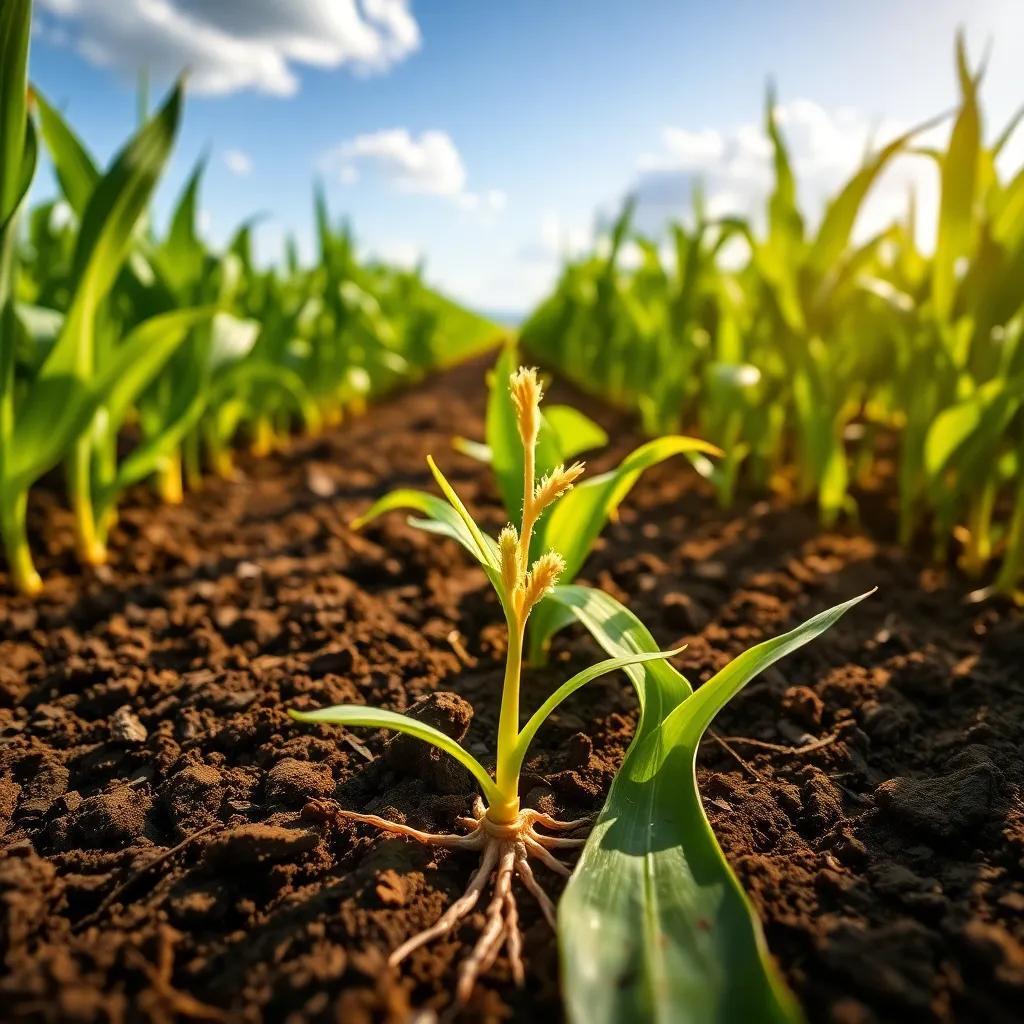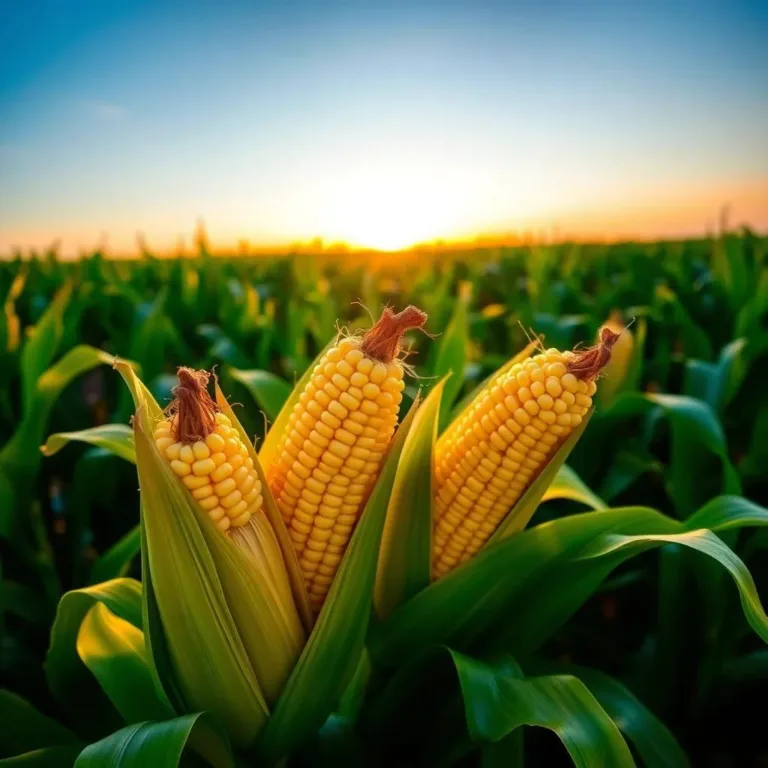Are you ready to get your hands dirty and grow some delicious corn? 🌽 In this article, I’ll share all the secrets, tips, and tricks about growing corn from seed to harvest! Whether you’re a seasoned gardener or a curious beginner, you’ll find everything you need to know to enjoy a bountiful corn crop. Let’s dig in and discover the wonderful world of corn cultivation together!
Factors Influencing Corn Growth Rate
Growing corn isn’t just about tossing seeds in the ground and waiting! There are several factors that play a big part in how well your corn will grow. Let me share some of the most important ones.
- Temperature: Corn loves warm weather. Ideally, it likes temperatures between 77-95°F (25-35°C). If it’s too cold, corn won’t grow well, and if it’s too hot, the plants might get stressed out. So, choosing the right variety for your area is key!
- Moisture: Just like a plant needs a hug, corn needs water! But not too much water, or it can drown. Consistent moisture is vital, especially during key growth stages. Aim for just the right amount, and your corn will thank you!
- Soil Quality: Rich, well-drained soil is like a five-star buffet for corn! Make sure it has good nutrients, and a pH level around 6-7. Test your soil before planting, so you know what to add to make it perfect for corn!
- Sunlight: Corn is a sun worshiper! It needs at least six to eight hours of direct sunlight each day. Make sure you plant it in a spot that gets good sunshine—nobody likes shady business!
- Seed Quality: High-quality seeds are like an all-star team. They should be from a reliable source and suited for your climate. This helps ensure they will thrive and grow strong!
By paying attention to these factors, you can set the stage for a bountiful corn harvest! My friends always say healthy plants start with good care, and I couldn’t agree more.
Stages of Corn Growth: From Seed to Harvest
After you’ve got everything set up, it’s time to watch your corn grow through several exciting stages! Growing corn can be like a dramatic movie with twists and turns, so let’s break it down together!
- Germination: This is the magical moment when your seed wakes up! It usually takes about 5 to 12 days for corn seeds to germinate. They soak up water, swell up, and send out their first root and shoot. Just like magic!
- Vegetative Stage: Now the fun really begins! This stage lasts about 30 to 60 days. The corn plants are busy growing leaves and strong roots. The more leaves they have, the more sunlight they can catch to make food. It’s like a leaf party down there!
- Reproductive Stage: This is when things get really interesting, around 55-95 days after planting. The tassels appear, and the plants start getting ready to make corn ears! Pollination happens here—how exciting! If you’re lucky, you’ll see the silks emerge, which means kernels are on the way!
- Maturation Stage: This last phase is where everything comes together! Around 90-110 days after planting, kernels fill up, and plants prepare for harvest. This is the reward for all the hard work!
Each stage is crucial, and the care you provide can make a real difference in how your corn turns out. Keep an eye on them, give them love (and water), and you’ll be celebrating your sweet corn harvest in no time! 🌽

Optimal Conditions for Growing Corn
Growing corn successfully requires a bit of knowledge about its ideal conditions. Think of it as creating the perfect recipe. Here are the main ingredients you need for happy corn plants!
- Soil Preparation: Start with well-drained soil that’s rich in organic matter. It’s like giving your corn a cozy bed to grow in! Aim for a soil pH between 6 and 7, which is just right for corn to absorb nutrients. Before planting, consider doing a soil test to see what nutrients your soil might need.
- Temperature: Corn loves the warmth. The ideal soil temperature for planting should be around 50-86°F (10-30°C). If it’s too chilly, your seeds might just sit there, feeling too lazy to sprout! Aim to plant corn once the risk of frost is gone and the soil has warmed up.
- Sunlight: Corn is a sun-lover! It needs six to eight hours of sunlight every day. When choosing a spot for your corn, look for an area with plenty of sun and minimal shade interference. This helps the plants grow tall and strong.
- Watering: Corn plants drink a lot, so regular watering is key! They need at least 1 inch of water per week, especially during the critical growth phases. Just remember not to overwater! Too much moisture can lead to root rot, and nobody wants that.
- Nutrients: During the growing season, corn needs nitrogen, phosphorus, and potassium. You can add fertilizer to give it a boost, but be sure to follow the recommendations based on your soil test.
By keeping these optimal conditions in mind, I know your corn plants will thrive! It’s all about giving them the right care and attention they need to grow beautifully. 🌽
Common Challenges in Corn Cultivation
Every gardener faces a few bumps in the road when growing corn. It’s like stepping on a garden rake—ouch! Here are some common challenges I’ve encountered and tips on how to deal with them!
- Pests: Hungry pests can turn your corn from hero to zero! Common troublemakers include corn earworms, aphids, and rootworms. To keep them at bay, consider using natural pest deterrents or introduce beneficial insects like ladybugs. Regularly inspect your plants for any signs of trouble!
- Weeds: Weeds are like party crashers in your cornfield. They steal nutrients, water, and sunlight from your corn plants. Keep them in check by using mulch, hand-weeding, or applying herbicides if necessary. Staying two steps ahead of weeds will help keep your corn healthy.
- Diseases: Diseases like gray leaf spot or corn smut can wreak havoc on your crop. To prevent these issues, practice crop rotation, maintain good air circulation, and keep the area clean. Healthy plants are less likely to fall ill!
- Environmental Factors: Weather can throw a wrench in your plans. Extreme heat, heavy rainfall, or drought can all stress your corn plants. Keeping an eye on weather forecasts and adapting your care routine can help mitigate these issues.
- Soil Problems: Poor soil quality can stunt growth and reduce yields. If you notice yellow leaves, it might mean your corn is lacking nutrients. Regular soil testing and amendments can help keep your soil in tip-top shape!
Being aware of these challenges and preparing for them can make all the difference in your corn-growing adventure. I’ve learned that staying proactive and attentive usually leads to successful harvests!
Harvesting and Post-Harvest Care for Corn
Harvesting corn is one of the most exciting moments for me as a gardener! After all that hard work, it’s time to enjoy the fruits (or should I say kernels?) of my labor! Here’s how to go about it.
- Timing the Harvest: Knowing when to harvest is key. Corn is ready when the silks turn brown, and the kernels feel plump when you press them. Ideally, aim for a moisture content between 20-25% for the best flavor and storage. You don’t want to pull them too early or too late!
- Choosing the Right Tools: If you have a big cornfield, a combine harvester can make the job much easier. For smaller gardens, use a sharp knife or shears to cut the corn stalks at the base. Just be careful not to damage the ears!
- Post-Harvest Care: Once harvested, the fun isn’t over! Quickly transport your corn to a cool, dry place to keep it fresh. If you’re not eating it right away, you might want to consider drying or freezing some for later.
- Cleaning Up: After harvesting, it’s important to clean up the leftover stalks and debris. This helps prevent pests and diseases from taking root in your garden and gives your soil a chance to recover.
- Planning for Next Year: Don’t forget to think about your next planting season! I like to keep notes on what worked well and what didn’t. This helps make my next corn-growing adventure even better.
Harvesting corn is like the big reward after a long journey. Enjoy your corn and the satisfaction of a job well done! Happy harvesting, friends! 🌽

